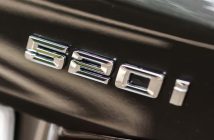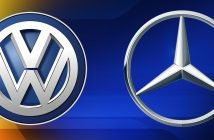+++ BMW has broken ground on a new high-voltage battery assembly plant located in Woodruff, South Carolina, marking an important step in the car manufacturer’s plan to produce electric vehicles on U.S. soil. The facility in South Carolina, known simply as ‘Plant Woodruff’, will produce the 6th generation batteries that will power all-electric BMW X models produced at its major manufacturing plant in nearby Spartanburg, South Carolina. The new site will generate more than 300 jobs. The battery cells used in the packs produced in Woodruff will be manufactured and supplied by AESC from its 30 GWh battery cell factory in Florence, South Carolina, which is also under construction. This site will produce round lithium-ion battery cells, a new format that’s said to increase energy density by more than 20% while also improving charging speeds and range by up to 30%. BMW notes that CO2 emissions from cell production will be reduced by up to 60% through the partial use of secondary lithium, cobalt, and nickel. Renewable energy will also be used for production. “We’re making the BMW Group electric. Our new battery assembly plant in Woodruff will soon play an important role in our electric future here in the USA”, member of the board of management of BMW responsible for Human Resources and Real Estate, Ilka Horstmeier said. “Through the Woodruff plant, we expand our footprint in the state of South Carolina. At the same time, we are taking our associates with us in this transformation. Our new Technical Training Center at the Spartanburg plant will prepare our 11.000 associates for the future. In this way, we are taking responsibility as a reliable employer and offer future-proof jobs at the same time”. BMW’s Spartanburg plant will build at least 6 fully electric vehicles. The carmaker has confirmed that Plant Woodruff will use 100% green electricity and that it will even use special concrete in its construction that injects captured CO2 during the mixing process. +++
+++ BUGATTI has confirmed plans to expand its headquarters in Molsheim, France, in an investment program that, it says, will “support the development of new models beyond the era of the Chiron”. Among the planned site changes is the construction of a new 2-storey building adjacent to the existing Atelier, where the Bugatti Chiron is assembled. Set for construction during the second half of 2024, the building will occupy 2.120 m2 and accommodate new staff and further development projects, including what Bugatti describes as its first “hypersports” model under the ownership of Rimac. The new Bugatti model, already under development, is expected to draw on parent company Rimac’s electric drivetrain expertise, with accelerative performance beyond that of the 1.600 hp quad-turbocharged 8.0-litre W16 petrol-powered Chiron Super Sport. The expansion of existing facilities will also support ongoing programmes such as the production of the Bolide and W16 Mistral, says Bugatti. “The construction of this new building at our home in Molsheim is aligned with the brand and product expansion”, said Christophe Piochon, president of Bugatti. Bugatti has instigated a recruitment campaign to attract new employees. It aims to increase the workforce at Molsheim by 50% by the end of 2027. +++
+++ The FARADAY FUTURE FF 91 may finally become a reality after the company revealed that it has secured an investment of $105 million, less than 2 weeks after deliveries were delayed while the company looked for new funding. The funding consists of an additional $90 million from existing investor ATW Partners with participation from Senyun International. The remaining $15 million had already been committed to Faraday Future but it will now be accelerated and like the $90 million, support the production and delivery of the FF 91. “This remarkable display of support from our existing investor base serves as a powerful testament to their unwavering belief in FF’s vision and its immense market potential”, Faraday Future chief executive Xuefeng Chen said. “We are grateful to our investors and partners for their trust. This funding is another critical step for FFIE to complete immediate and medium-term strategic objectives. We are poised to continue moving forward to deliver the FF 91 Futurist Alliance to our users focused on our 3-phase delivery plan”. Faraday Future has added that independent investment fund Metaverse Horizon Limited have waived closing conditions and made prefunding contributions of $25.2 million towards their previously announced commitment of $100 million in unsecured notes. The carmaker adds that it is continuing to pursue additional funding sources. Deliveries of the long-awaited FF 91 officially started on May 31 but only appear to have run for a few days before being halted. Just 2 variants are currently available, known as the 2.0 Futuristic Alliance starting at a staggering €415.000 (Dutch pricing) and the ‘regular’ Futurist from €330.000. For that money, shoppers will receive an EV with a claimed 613 km of range that pumps out a monstrous 1.050 hp and can apparently hit 100 km/h in 2.4 seconds. +++
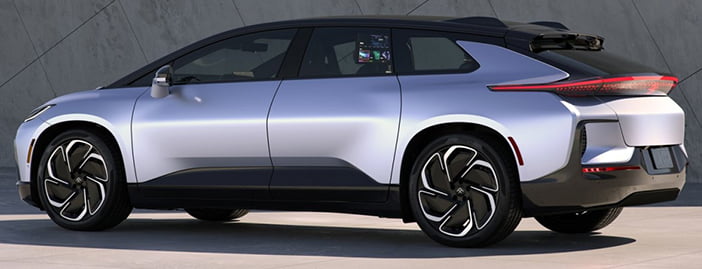
+++ MERCEDES dealers suggest that the German automaker is listening to concerns about the rapid shift to EVs. The company could be looking to slow down the planned hard switch to EVs and further extend support to internal combustion. The news comes following a dealers meeting held in mid-May amidst worries that the increased cost of EVs is putting buyers off the new tech. According to the Mercedes Ambition 2039 document, the automaker aims to have an all-electric lineup by the end of the decade in markets “where conditions allow”. But the luxury car maker is planning to scale back on its aggressive EV strategy in some parts of the world. “They have come to the realization that consumers have a role to play in this decision”, the dealer said. “They have to listen to what consumers want. Many just can’t afford electric vehicles. Everyone is eager for electrification. However, customers remain value-conscious as interest rates have increased and people are being more cautious with their finances”. Mercedes-Benz dealers have said that the company will realign focus on hybrid and ICE-powered cars, as well as focus on more affordable options in the light of increased interest rates and the inflation of housing and consumer goods. Meanwhile, Mercedes aims to introduce an electric CLA and the second-generation electric GLC next year. +++
+++ The redesigned MERCEDES-AMG GT is getting ready for its big debut and the company is offering members of the AMG Private Lounge a sneak preview. The event will be held at AMG headquarters and fans will be treated to a “unique presentation of the AMG GT by a product expert who will show you all the highlights of the coupe, before the world premiere”. Besides checking out the car, visitors can grab lunch and partake in the AMG Factory Experience. They can then go on a “guided drive” in a C 63 S E Performance, SL 63 or EQE 53. Mercedes-AMG is hosting previews from the 10th to 13th of July and each daily session is limited to 24 people. The event costs €450, although most spots have already been booked as of this writing. Putting the event aside, Mercedes released the first teaser of the redesigned AMG GT. However, there isn’t much to see as the car is shown beneath a form-fitting cover. That doesn’t matter much as spy photographers have caught the model on numerous occasions and the car will follow in the footsteps of the SL. That being said, the GT features a larger and more aggressive grille, unique headlights, and a modified front bumper with vertical air curtains. Coupe fans will also find unique front fender vents and an updated rear end with slender taillights. More notably, the GT will adopt a slightly more practical 2+2 interior. We can also expect a 12.3-inch digital instrument cluster and an 11.9 inch infotainment system. Engine options should carryover from the convertible and this means we can expect a GT 55 with a twin-turbo 4.0-liter V8 pumping out 476 hp and 699 Nm. The GT 63 should increase those numbers to 585 hp and 799 Nm. They’ll eventually be joined by performance-focused plug-in hybrids. +++
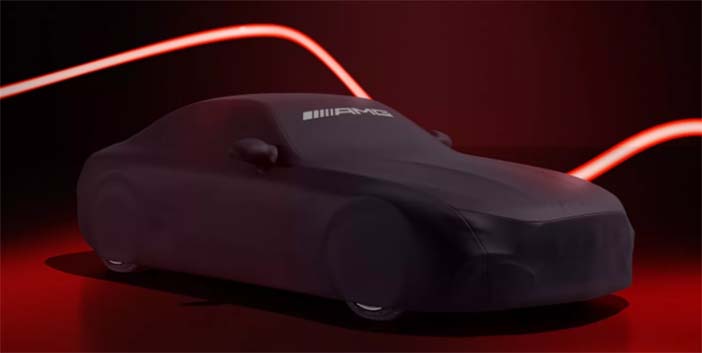
+++ OPEL has joined other automakers in updating its logo as the industry transitions to building electric vehicles. The new interpretation of the emblem will begin arriving on Opel’s production cars as early as next year. The automaker will roll out the new logo to the rest of its portfolio over the coming years. Opel’s new lightning bolt badge (or ‘Blitz’ in German) helps associate the brand with electricity. The automaker wants to become a fully electric brand in Europe by 2028, and it plans to have 15 electrified models in its portfolio this year, according to company CEO Florian Huettl. The first production vehicle to wear the new emblem arrives in 2024, but we’ll see a lot of the freshened badge throughout the year. We have no idea what model the new logo will adorn first. Opel said it would have an extensive introduction for the emblem at this year’s IAA Mobility, the Munich Motor Show, with a planned “surprise” for visitors. Opel most recently updated its branding in 2020 after joining PSA Group, which would become part of Stellantis when it merged with Fiat Chrysler Automobiles. The new badge isn’t far from the current one, with additional spacing added around the lightning bolt mark at the centre that separates it from the encompassing circle. It’s a tad sharper, too. The new logo will continue to sit in the centre of the Opel Vizor brand face, a key element to the vehicle’s exterior and interior design. “The sharpened, confident new ‘Blitz’, intersects the pure supporting ring, giving our iconic emblem a progressive, modern look”, said Mark Adams, Opel Vice President of Design. Opel joins a growing list of automakers updating their branding and logos. Infiniti announced minor changes to its badge last week, introducing a new 3-dimensional emblem and new architecture for its retail centres. So far this year, Opel is the 4th automaker to update their logo, joining Jaguar Land Rover and Porsche. Since 2019, Volkswagen, Renault, Peugeot, Nissan, Lotus, Kia, General Motors, Cadillac and many others have updated their emblems and badges. As automakers fill their portfolios with EVs, they are updating more than their products to help convey to customers their new direction. +++
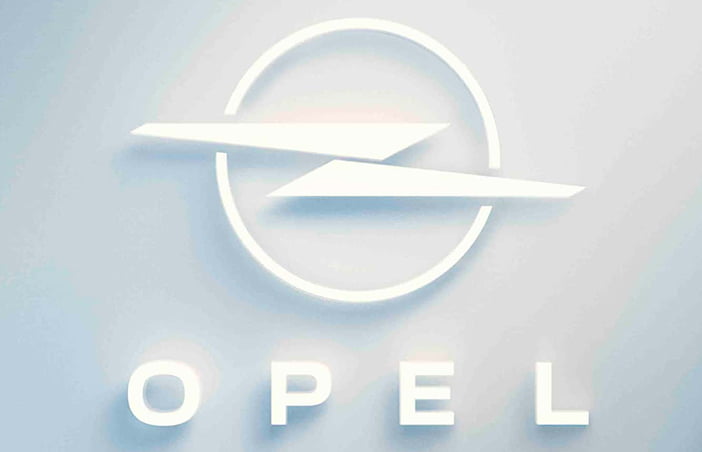
+++ We’ve seen the PORSCHEMACAN EV testing multiple times before but now we have an official teaser image showing the car’s design. The sketch was revealed alongside a concept electric boat which uses the same drivetrain as the Macan EV. The image highlights plenty of design details we expected to see on the new Macan EV. To the rear there’s a full-width LED light bar and the rounded headlight cluster is similar to the current Macan’s. The profile is more rakish than the ICE Macan, however, giving a more sporting stance. Along with the latest teaser, Jörg Kerner, Vice President Product Line Macan, spoke on the Macan EV, “With the all-electric Macan we want to provide the sportiest model in its segment”. To achieve this, the Macan EV will be one of the first cars to sit on the VW Group’s new PPE architecture. Senior engineers from the Macan EV project have told that the adoption of an all-new platform, the Volkswagen Group’s latest PPE setup, will allow the Macan to feature not only trick 800 Volt electrics but also significant chassis tweaks that will “make the Macan feel unmistakably like a Porsche”. At spy pictures we can see round headlight clusters in typical Porsche fashion with lower fog lights integrated into the side air intakes on the bumper. At the side there’s uncomplicated, smooth surfacing with plastic wheel arches and a charging flap located above the rear wheel. The roofline slopes down to the boot opening in the typical Macan coupe-SUV style and to the rear we can see an active aerodynamic spoiler. There’s still camouflage on the rear light but expect a lightbar just like the Taycan’s here, we’ll ignore the obviously fake exhaust tips on the bumper. Underneath the body we’ll see the most advanced iterations yet of Porsche’s Active Suspension Management, with 2-valve dampers used for the first time on any of the firm’s cars, electric or combustion-engined. “This allows us a greater spread of settings”, Dominik Hartmann, the car’s chief chassis engineer told us. “You’ll feel a bigger difference between all of the PASM modes”. Both steel springs and air suspension will be available, with a double-wishbone layout at the front and a multi-link set-up at the rear. The car will be able to vector its torque from front to rear (in fact, it will run in rear-drive mode most of the time, with the front motor disconnected, as in the latest Taycans) and an electronic rear differential will allow lateral torque flow at this end of the vehicle, improving agility. There’s rear steering too, with up to five degrees of angle to aid manoeuvrability and stability, and a revised front/rear weight distribution of 48/52 has persuaded Porsche to increase the difference in width between the front and rear tyres. Up to 22-inch wheel sizes will be offered. The Macan will feature a prismatic cell-based battery of around 100 kWh in capacity and be capable of faster charging speeds than the Taycan’s 270 kW, with enough shove to recharge from five to 80 percent of capacity in just 25 minutes. The total system power from both motors is more than 600 hp, with over 1.000Nm of torque. The battery set-up will also feature a trick inverter designed to slightly increase the charging rate when connected to slower 400 Volt chargers. The system (not dissimilar to the tech featured in some smartphones) will, in effect, split the 12 battery modules into a pair of 400 Volt packs when it realises it has been connected to a charger running at that rate. It will level up the charge between the ‘2 halves’, then feed both simultaneously for a small reduction in the overall charging time. The new model (the first of Porsche’s nameplates to move across from combustion-engined power to all-electric propulsion) will make use of the PPE platform to get a longer wheelbase within similar dimensions to the current car’s. This should boost cabin space in the rear. Hartmann told us, “I’m over 6-foot 4-inches and I’m very comfortable in the rear cabin. We’re confident we have made gains in the packaging there”. There’s no official word yet on a debut date but expect first deliveries to customers in the second quarter of 2024. +++
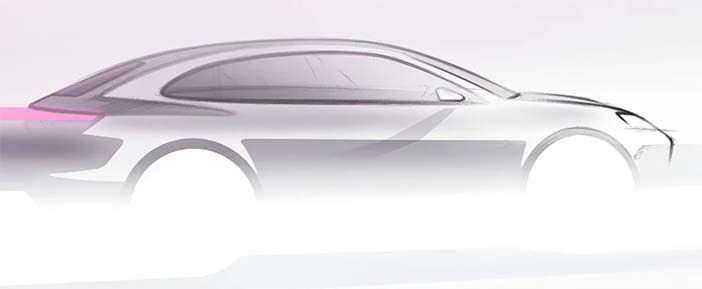
+++ A low-resolution image of the upcoming all-electric SCOUT pickup and SUV was embedded in the official Volkswagen Capital Markets Day presentation and shows what the 2 vehicles might look like when they debut as concepts sometime next year. The grainy photo confirms the boxy side profiles published by the Volkswagen-owned entity last year and adds barely visible details like the triangular shape on the pickup’s rear door window, black moldings on the lower part of the bodywork, and what appears to be a large glass roof. There’s also a high beltline which adds to the rugged image, and what seems to be a Rivian R1T-like full-width LED light bar at the front. At the same time, there are no visible side mirrors, which leads us to believe that the concept vehicles will probably come with video cameras instead of traditional mirrors. It’s worth noting that it’s still way too early to know for sure what the 2 electric vehicles will look like when they’re finished, but by the looks of it, they’ll probably be similar to the Ford Bronco, with a simple body shape inspired by the old International Harvester Scout that was built in Indiana throughout the 1960s and 1970s. Volkswagen is serious about this project, hinting at a new all-electric platform that will underpin the new Scout models and investing $2 billion in a new factory in Columbia, South Carolina where the US-centric EVs will be assembled starting in 2026. Furthermore, internal engineering will focus on things like ground clearance, approach and departure angles, robust axles and payload capacity, which suggests the new Scout vehicles won’t just be another drop in the bucket of cars that look like they could perform well off-road but are actually only comfortable driving on smooth, paved surfaces. Details such as range and power are still unknown, but we could see ratings of around 400 miles on a full charge and a power output of around 300 hp, making Scout competitive against the ICE-powered Ford Bronco and Jeep Wrangler. Price-wise, Scout CEO Scott Keogh confirmed in an interview that the SUV will cost $40,000 or “just north of there,” which means it will probably be in the same league as Rivian’s upcoming R2-based EVs. +++
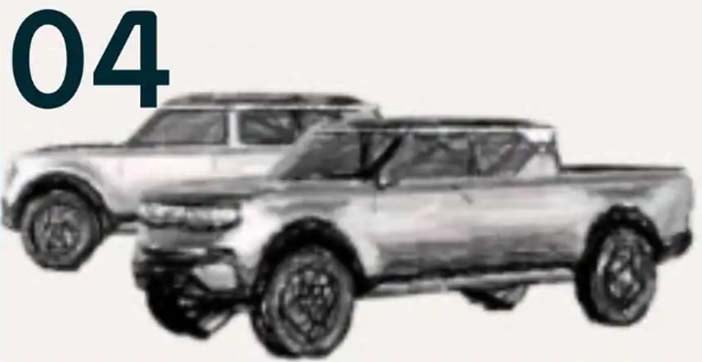
+++ In the contest to dominate the rankings for automobile brand loyalty, TOYOTA used to be “neck and neck” with Ford and Chevrolet. Key takeaway: used to be. A recent S&P Global Mobility survey showed that among mainstream auto brands for the first 4 months of this year, Toyota fell to 7th place in the rankings, with Ford and Chevrolet topping the list. One reason for the drop, according to analyst Tom Libby of the market research firm, is a migration of customers to electric vehicles, primarily to Tesla. In fact, Tesla again topped the loyalty ranking for luxury brands, at 68%, 18.8 points above BMW in second place. Mercedes-Benz, Lexus and Cadillac rounded out the top-5. With no other luxury brand above 50%, Tesla is the only one that is keeping more customers than it is losing, Libby said. In his webinar remarks, Libby also suggested that Tesla’s loyalty effect is so pronounced that it is up 1.1 points despite not having released a new vehicle since 2020. He added that, although EV sales remain small for many brands, “there’s no doubt that Toyota, Honda and some other Asian brands are being impacted tremendously by Tesla”. Regarding the mainstream segment, Libby reported that Ford recorded 59.5% brand loyalty this year through April, followed by Chevrolet, at 57.1%, and then by Subaru, Nissan, Kia and Hyundai. Toyota was down 5.7 points from the same time last year to 52.3%. Though Ford topped the ranking, the brand essentially matched its loyalty from the same time last year, while Chevrolet was up 2.6 points. “We will obviously have to watch the results going forward, but just in these first 4 months, Toyota is a disappointment”, he said. +++
+++ Although the 8th generation VOLKSWAGEN Golf and the first-generation ID.3 were well reviewed as vehicles, their infotainment systems were widely criticized. The brand is now on a mission to redress that, and its CEO Thomas Schäfer has called the next-generation Tiguan (whose interior was recently teased for the first time) a statement of intent from the brand. Although the interior is still simple and the Tiguan comes with a large infotainment system and few physical controls, the automaker has focused on fixing the areas that got the most complaints. To wit, it has gotten rid of the unlit climate control sliders and the haptic buttons on the steering wheel. Schäfer admits that the Mk8 Golf and the ID.3 “definitely did a lot of damage” to the brand’s reputation among loyal customers. The new infotainment controls are part of a focused effort to make its vehicles easier to operate. “We had frustrated customers who shouldn’t be frustrated”, the CEO said. “So we’ve spent a lot of time now, working through really systematically, on what all the functions are that a customer usually touches when using a vehicle”. To do that, VW had to rank the functions touched by drivers in terms of importance, figure out which need to be permanent buttons and which can go on the screen, how deep into the menus the ones on the screen could go, and how to place them all intuitively. “We worked through this with a massive team”, said Schäfer. “It took us quite a bit of time. It was an Excel spreadsheet as big as a room, but you have to do that”. He says that one of VW’s strengths has always been its interiors, and it doesn’t want to lose that reputation. Moving forward, it will work to make controls consistent across different models, to prevent customers from being confused. “Once you have it, don’t touch it again. Bloody leave it”, said Schäfer. “Don’t confuse our customers every time a new model comes out and something is completely different. Optimize it. Bring into the future. But don’t change buttons from here to there, to there and here”. While the upcoming Tiguan will be a sign of things to come, Schäfer says that the vehicle that will crystallize the design of its tech moving forward is the all-electric ID.2, which is set to arrive in 2025. +++
+++ New VOLVO design chief Jeremy Offer is the first to admit that his “background is not the traditional automotive profile”. The Brit joined the Swedish firm in May after a 6-year stint at electric commercial vehicle start-up Arrival, but the bulk of his 20-plus year career has been spent working in industrial design and consulting. But it’s that unorthodox background that made him the choice of Volvo boss Jim Rowan, himself an automotive outsider who previously worked in tech. “I’ve got a unique take on the automotive industry, and that chimes with what Volvo is doing and the area the automotive industry is heading”, adds Offer. He recently gave an interview about how his unique approach to car design will shape the future of Volvo. Question: What will you bring to Volvo? Answer: “Automotive design is no longer about the one area of vertical integration the automotive industry traditionally had, the engine, and it’s now about core computing, software and the user experience: human-centred design. These are all the things I have a lot of experience in coming from more of a consumer electronics background. The automotive industry is becoming more device-like, an extension of your digital lifestyle that needs to be seamless when you get into your car. So creating that requires a more holistic idea of what designing a car is about rather than just interior and exterior styling. That is key”. Q: What about the emotional response a vehicle can offer? A: “With an EV it’s no longer about the visceral: the sound of the car, or changing gears and the interface that you have with the mechanical components of the car. It probably hasn’t been there for a lot of people for some time, frankly. Those experiences now come from different areas. So, for example, creating a new language around premium and luxury by allowing more space and light into the vehicle. That helps to define that feeling that when you get into a vehicle: there is that wow factor, but it’s more of a sensory feeling around the interior space that you’re in and the ergonomics”. Q: What do you bring from outside the car industry that can help push Volvo forward? A: “It’s about creating cross-functional teams that can enhance the experience. I have so much breadth of experience, from modelling in Alias to designing user-centred experience flows. There was a period in time when design shifted from dumb physical products, your kettle or your toaster, to connected physical products like your laptop or phone. The Nest thermostat was a big one for this: all of a sudden it was about connectivity and a digital interface, and the physical product itself became a portal. We’re seeing that with the automotive industry now. We’re seeing the car becoming a physical portal to connected software and services, so something that’s key is ensuring that flow of your digital life as you move from home to work to your car, a seamless integration with the technology. But it’s still about the driving experience, and that is another dimension that fully electric gives you: the EX30 can do 0-100 kph in 3.6 seconds. Which is insane”. Q: What about distinctive Volvo design features, like the headlights? A: “I’m a big believer that the certain key brand expressions like the Thor’s hammer headlights are kind of sacrosanct, and Thomas Ingenlath did an amazing job of bringing in those themes. Where I see development is in technology. So when we can start to use thinner light blades, for example, that creates a much more technical futuristic expression of what the Thor’s hammer looks like”. Q: So you’re not looking to reinvent Volvo’s car design then? A: “With the heritage that Volvo has, certainty in terms of form language, we will iterate and move it on. A lot of that is defined by the use cases, and defined by the technology. But we’re not going to throw the baby out with the bathwater: it’s about moving that design language into this new era”. Q: Volvo has a tradition of estate cars. Could you make an estate sexy again? A: “All I can say is that there’s no reason why an estate can’t be sexy. If we were to design an estate or a saloon, there is no reason why great design can’t make it sexy. That’s a really key point: there is a feeling that coming from my background, exterior design is secondary now to user experience. It’s absolutely not: creative direction is one of my absolute strengths. I will make sure every Volvo that has my name on it will look incredible”. Q: Some of your rivals have been moving to quite extreme designs. Is that something you’re considering? A: “The idea of aggressive and noisy styling is definitely not something in the Volvo DNA. Our design language is quiet, there is a sort of humility and elegance to it. Frankly, when you’re surrounded by so much visual noise in cities, having something like that stands out because of its quietness, confidence, and intelligence. In a plethora of frankly, overstyled vehicles Volvo’s design language is a pinnacle of form following function, or rational simplicity”. +++

